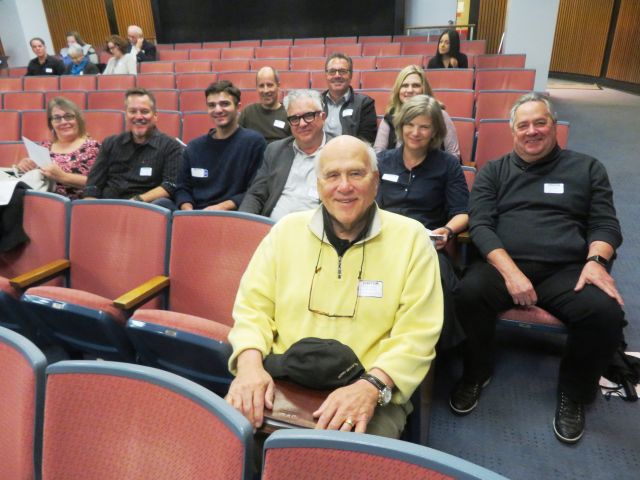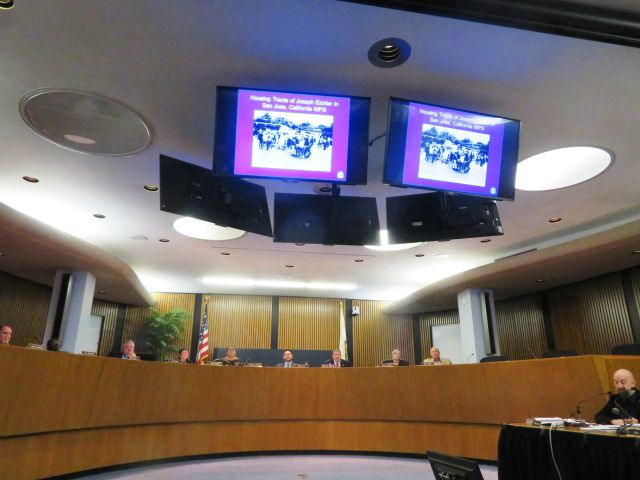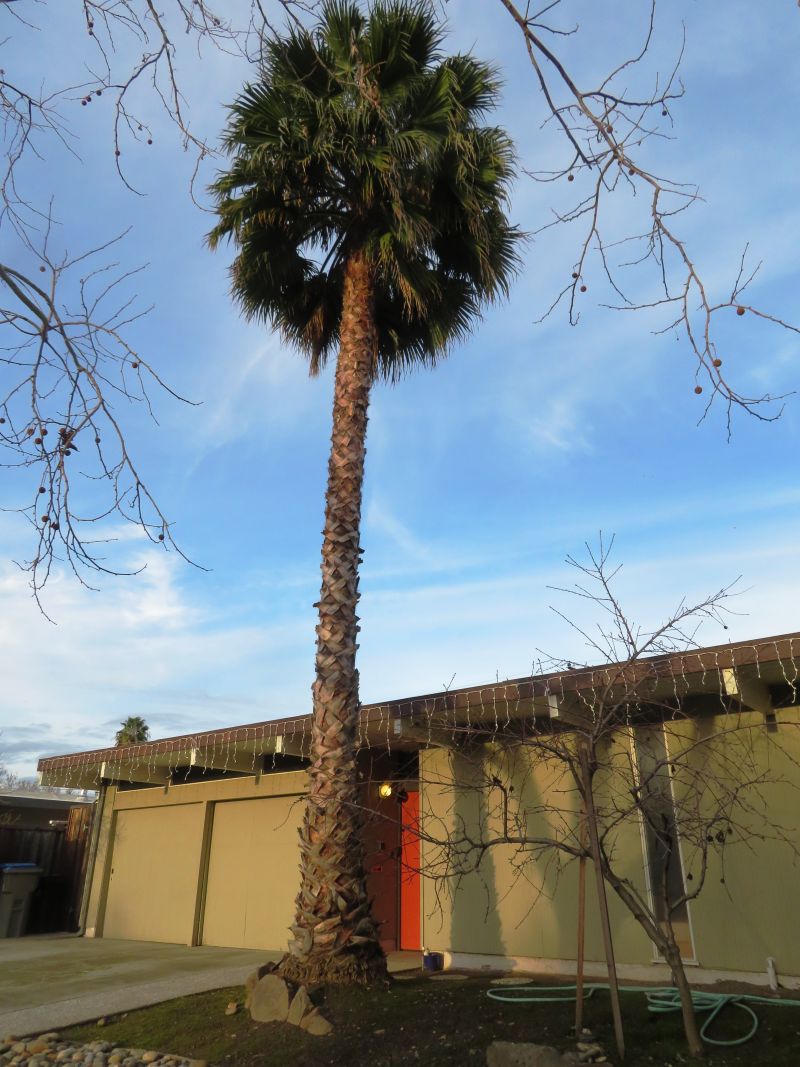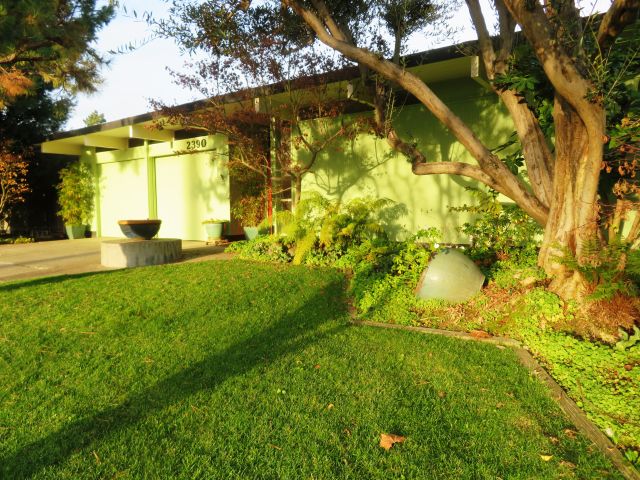
San Jose Tract Named to National Register
 |
|
|
It was a historic day on February 1, 2019 when state officials recognized the historic nature and general architectural integrity of a 218-home Eichler subdivision in San Jose, essentially adding it to the National Register of Historic Places.
Official placement will be done in Washington by the 'keeper' of the National Register, who invariably follows the lead of each state’s preservation commission.
The last time any Eichler neighborhoods made it to the Register – and the first time too – was back in 2005. The neighborhoods were Greenmeadow and Green Gables in Palo Alto. Only one other Eichler home has been named to the Register, the wonderful all-steel X-100 in San Mateo Highlands, which made it in 2016.
'Fairglen Additions No. 1, 2 and 3,' an ungainly name that distinguishes the tract from a few others in San Jose that also bear the Fairglen name, is bordered by Curtner and Fairwood avenues to the north, Booksin Avenue to the east, Andalusia Way to the south, and Briarwood Drive to the west.
 |
|
|
It is the only tract in San Jose that sought National Register honors – but may not be the last. And if other neighborhoods in San Jose find it easier to attain this honor, they will have the folks from Fairglen Additions to thank.
That’s because, in addition to nominating their own tract, the handful of deeply active residents who spearheaded the campaign also filed and won approval for a second document, ‘Housing Tracts of Joseph Eichler in San Jose, California, 1952 -1963,’ which discussed but did not intensively survey seven tracts throughout the city, a total of 484 homes.
This was not an attempt to place all the homes on the National Register, Sally Zarnowitz, who wrote both the Fairglen nomination and the wider survey, emphasizes. Rather, the second document, known as a ‘multiple property documentation form,’ serves as “a context statement that can be used to support nominations for Eichler tracts in the city of San Jose,” says William Burg, the state historian with the California Office of Historic Preservation.
It was Burg who worked with neighbors to win this honor for their tract, which also comes with placement on the state’s Historic Register of Historic Resources. He presented the nomination to the state Historic Resources Commission, whose approval was unanimous.
 |
|
|
Any residents of other San Jose neighborhoods who wish to follow Fairglen’s lead can use the multiple property form as background for their own nomination.
These are the Eichler neighborhoods in San Jose, as cited in the report: Morepark Eichler Homes Tract, 1952-1953; Fairglen Eichler Homes Tract, 1957-1959; Fairglen Eichler Homes Tract Additions No. 1, 2, and 3, 1959-1961; Hudson Eichler Homes Tract, 1960-1962; and Fairhaven Eichler Homes Tract 1962-1963.
Ten residents of Fairglen attended the hearing, all strong proponents. Sally Zarnowitz and Peter Hurd spoke before the commission. The matter was not on the commission’s consent calendar, as many nominations are, because there was opposition.
The commission received two letters opposing placement on the Register. But no one appeared to speak against it.
No one appeared from any other Eichler neighborhood to support the plan, or just enjoy the presentation, which featured a short drive-by video showing homes in the neighborhood (carefully avoiding some of the more howling two-story additions). It was intended to convey that the neighborhood “conveys a sense of its time,” Zarnowitz said.
The neighborhood was completed in 1961.
 |
|
|
Commissioner Luis Hoyos congratulated Zarnowitz, Hurd, and crew for winning strong neighborhood support. “To convince 200 other people to tag along is a monumental task,” he said.
For a neighborhood to win listing, more than half the homeowners must approve. Homeowners may object – but if the majority approves, all the homes are included in the district.
Being placed on the National Register does not impose architectural or zoning controls. That is up to local jurisdictions. It remains to be seen whether Fairglen residents will seek such regulation.
But being on the Register makes it clear that a tract has cultural value – which can make preservation easier when threats arise.
The Fairglen National Register effort began in 2016, Hurd told the commission, with the formation of a committee. They reached neighbors through parties and discussions and via Nextdoor, the social media site. Home visits were also part of the mix.
In the multiple property document, Zarnowitz makes a strong case that other Eichler tracts could win listing on state and national registers.
“The seven tracts in San Jose built by Eichler Homes are fully representative of Joseph Eichler’s body of work in building single-family residential subdivisions, and span most of his career following the beginnings of work on the Morepark Tract by 1952,” Zarnowitz writes. “Morepark was a part of his early experimental period in which he worked with both the firms of Anshen and Allen and Jones & Emmons. Both firms continued to be involved with the San Jose tracts, and Jones & Emmons were designers on his last tract in San Jose, Fairhaven.”
She writes that the tracts could be found “eligible as historic districts...as prototypical or distinctive examples of the postwar housing boom and suburban growth in San Jose during this period.”
- ‹ previous
- 503 of 677
- next ›



